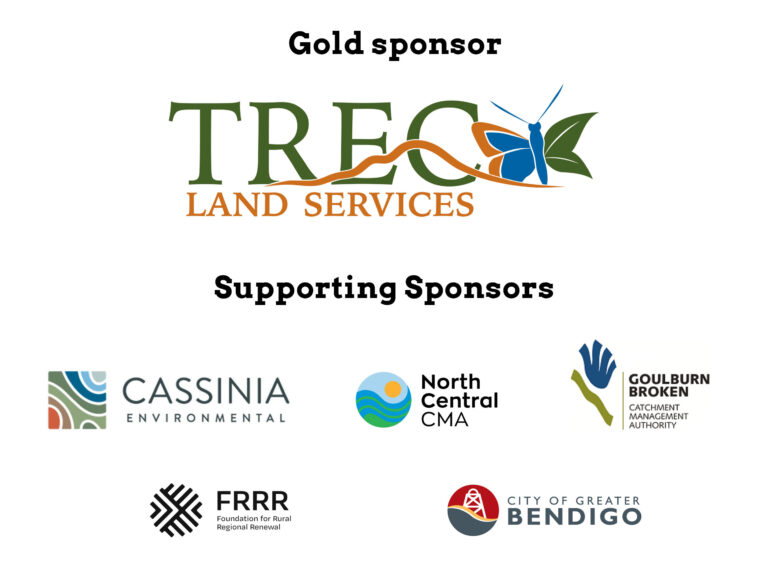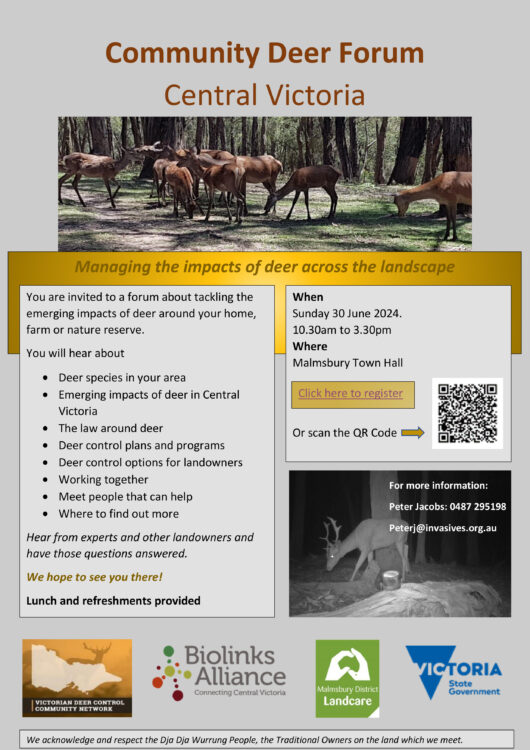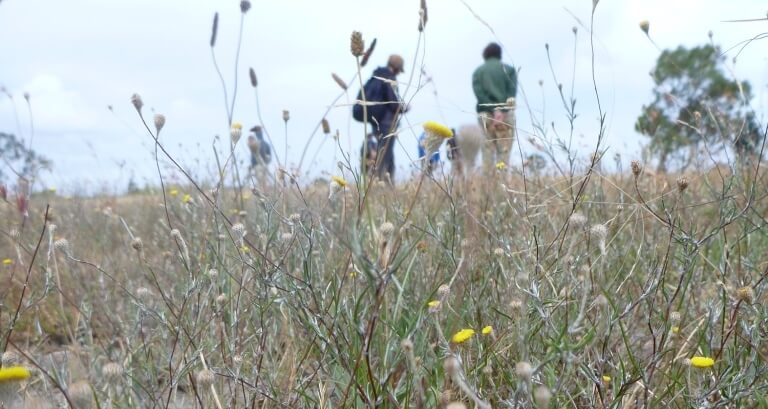Exploration and monitoring of Landcare project sites across Upper Campaspe Catchment.
At the heart of the Upper Campaspe Network’s vision lies a dedication to protecting biodiversity, fostering connectivity across landscapes, and ensuring a healthy, productive region for generations to come. As stewards of this vision, the Upper Campaspe Landcare Network is committed to action.
We know that our Member Groups are passionate environmentalists, dedicated to the vital task of habitat restoration across the Upper Campaspe Catchment. We know that you share this Vision and have been diligently working to remove weeds and revegetate both private and public land, recognizing revegetation as a crucial aspect of habitat restoration and the creation of diverse ecosystems.
But how do we measure the success of these efforts?
To answer this question, the Upper Campaspe Landcare Network is asking you to embark on a new project.
Exploring habitat restoration success ~ introducing the project
We aim to work closely with our Member Groups across the Upper Campaspe Catchment, equipping them with the skills necessary to conduct comprehensive habitat and fauna surveys at their Landcare project sites to determine:
- What happens after the planting?
- How we ensure the sustained success of our restoration efforts?
Measuring success together
By engaging your group members, your ‘Citizen Scientists’, in your monitoring efforts, you will gather valuable data to gauge the success of your habitat restoration initiatives. Through habitat assessments, fauna surveys, and careful observation, you will be able to assess the biodiversity and ecological health of your restored areas.
Sharing knowledge and building community
Crucially, we understand the importance of sharing your information not only amongst our Member Groups but also with the wider community. By recording and sharing your findings, we hope to enhance local understanding, foster collaboration, and inspire further action in the realm of conservation in the Upper Campaspe Catchment.
Exploring the aftermath of weed removal and indigenous plantings
We’re embarking with you on a journey to investigate the long-term outcomes of your habitat restoration projects. Through targeted exploration and monitoring of select Landcare project sites, we hope to deepen your appreciation and understanding of your past endeavours. Moreover, we seek to create resources that will guide our groups in future site selection, weed suppression, plant selection, and ongoing maintenance techniques.
Engaging Citizen Scientists
Central to this endeavour is the involvement of Citizen Scientists from across the Upper Campaspe Catchment. After receiving training in habitat assessments and fauna surveys, these dedicated individuals will inventory plant and animal species at select project locations. By observing lifecycles and documenting habitat features such as tree hollows, nesting sites, and leaf litter coverage, they’ll provide invaluable insights into site suitability for indigenous and pest species.
Monthly surveys and seasonal insights
Participants will be encouraged to conduct monthly habitat and fauna surveys at established Landcare project sites. This consistent monitoring will allow us to track how these sites change with the seasons, providing invaluable insights into the dynamic nature of our environment.
Capturing the journey through Visual Diaries and data collection
Each Member Group will create a visual diary for their designated site, capturing the journey of restoration efforts. These diaries will serve as a repository of notes, photos, poetry, artwork, and observations, providing a rich tapestry of information. Citizen Scientists will record weed regrowth, natural regeneration, and the return of mammals, amphibians, reptiles, and birds to revegetated areas, offering a comprehensive picture of site dynamics. These diaries will be shared among UCLN Member Groups, fostering collaboration and creativity while ensuring that essential data is collected.
Harnessing technology
To enhance data collection efforts, participants will receive GPS training to geo-tag photos and observations. Additionally, we’ll establish an iNaturalist page as UCLN Wildwatch, encouraging records of both plant and animal species through photography. This technology-driven approach will facilitate collaboration and knowledge sharing among participants.
Easily replicable and inclusive
Designed to be easily replicated, this project empowers groups to survey and monitor their existing sites and future projects from the project’s commencement. Moreover, its inclusive nature extends beyond Landcare, attracting new participants and forging connections that enrich our community.
Join us in making a difference
We invite all members of our community to join us in this exciting project. Whether you’re an experienced environmentalist or someone eager to learn more about our local ecosystems, there’s a role for you to play. Together, let’s work towards a future where caring communities come together to protect biodiversity and create a healthier, more vibrant region, and deepen our understanding of habitat restoration dynamics and ensure the long-term health of the Upper Campaspe Catchment.
Three Stages, Endless Impact
What’s at Your Spot will unfold in three main stages, each essential to its success: advertising and promotion, engagement and education, and on-ground exploration and monitoring. These stages will cycle through the life of the project, evolving as we attract more participants and deepen our understanding of our local ecosystems.
The Upper Campaspe Landcare Network is thrilled to announce the launch of this transformative new project made possible by Landcare Victoria! This initiative is set to change the way we engage with our environment and each other, all while making significant strides in habitat restoration and conservation.




